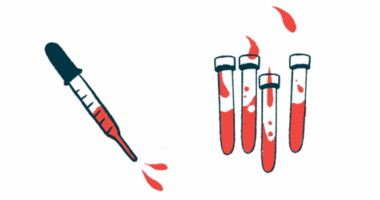Targeting type-1 interferons may help reduce SCD inflammation
Blocking receptor protein quelled immune responses, lowered antibody levels

Sickle cell disease (SCD) is associated with enhanced immune B-cell responses and the production of self-reactive antibodies that target and destroy red blood cells, according to data from a mouse model of the disease and patient samples.
These changes in immune responses were regulated by type-1 interferons (IFN-1), an immune signaling molecule. Blocking the IFN-1 receptor protein in mice suppressed these immune responses and lowered the self-reactive antibodies’ levels.
“This research provides crucial insights into how the immune system functions in sickle cell disease,” Karina Yazdanbakhsh, PhD, the vice president and director of research at New York Blood Center Enterprises, said in an organization press release. “By understanding these complex immune mechanisms, we can develop more targeted treatments for SCD patients, potentially reducing their vulnerability to infections while managing immune system complications.”
The findings were published in Blood in a study titled “IFN-I promotes T-cell–independent immunity and RBC autoantibodies via modulation of B-1 cell subsets in murine SCD.”
In SCD, sickled red blood cells, which are deformed and rigid, are prone to destruction, or hemolysis, and can become stuck inside small blood vessels. This results in a chronic inflammatory state that blocks blood flow and oxygen delivery, leads to tissue and organ damage, and promotes painful vaso-occlusive crises.
Immune responses in sickle cell disease
To understand the mechanisms behind the chronic inflammatory state associated with SCD, Yazdanbakhsh’s team of researchers used a mouse model of the disease to examine the role of key immune cell subsets.
Immune responses can be classified as either T-cell dependent or T-cell independent (TI) based on whether B-cells need T-cells to produce antibodies after an exposure to the substances that trigger an immune response, called antigens. B-cells are a type of immune cell responsible for producing antibodies to help fight potential threats.
Here, mice with SCD-like disease were exposed to either one of two different antigens, one that promotes T-cell dependent immune responses and the other that triggers T-cell independent responses, and their blood was analyzed.
The SCD mouse model had normal T-cell dependent immune responses relative to healthy mice. Their T-cell independent immune responses, particularly a subtype called TI type 2 (TI-2) were significantly enhanced, however.
Consistent with these findings, the frequencies of a B-cell type that responds to TI-2 antigens, called B-1b cells (in humans, B-1 cells), were significantly increased in the abdominal cavity and spleens of SCD mice.
Mice with SCD-like disease had significantly higher levels of self-reactive antibodies that target red blood cells (RBC) that cause hemolysis.
Research has shown that INF-1 signaling in B-cells contributes to TI-2 responses and that INF-gamma, a type of INF-1, is elevated in the bloodstream of SCD patients and mouse models.
To investigate the role of INF-gamma in TI immune responses in SCD mice, the researchers treated them with an antibody that blocks the INF-1 receptor, which is activated by INF-1 molecules, or genetically modified SCD mice to lack this receptor.
Both approaches resulted in significantly reduced TI-2 immune responses and anti-RBC autoantibody levels.
In SCD mice that lack INF-1 receptors, the high frequencies of B-1b cells in the abdominal cavity were reversed entirely. This was specific to SCD mice because there were no changes in B-1 cell subsets in healthy mice that lacked the INF-1 receptor.
“These data support the notion that IFN-I plays a crucial role in both TI-2 immune responses and the regulation of anti-RBC autoantibodies by modulating B-1 cells in SCD mice,” the researchers wrote.
Blocking IFN-1 to control autoantibodies
Lastly, to see if these results translate to people, the researchers analyzed blood samples from SCD patients and healthy donors matched by ethnicity and age.
They found that SCD patients also had significantly higher frequencies and numbers of B-1 cells than healthy donors. Also, SCD patients had significantly higher levels of anti-RBC autoantibodies, which correlated strongly with the numbers of B-1-like cells.
“Our data support the idea that [blocking] of IFN-I can be used as a potential intervention to control [anti-RBC] autoantibodies in patients with SCD,” the researchers wrote.
“The findings from Dr. Yazdanbakhsh’s lab are truly exciting and novel,” said Banu Aygun, MD, associate chief of hematology and section head of SCD at New York’s Northwell Health Cohen Children’s Medical Center. “The team’s discovery of anti-(RBC) autoantibodies, and the underlying mechanisms through type I interferon and B1b cell subsets, provide crucial insights for future therapeutic interventions.”







